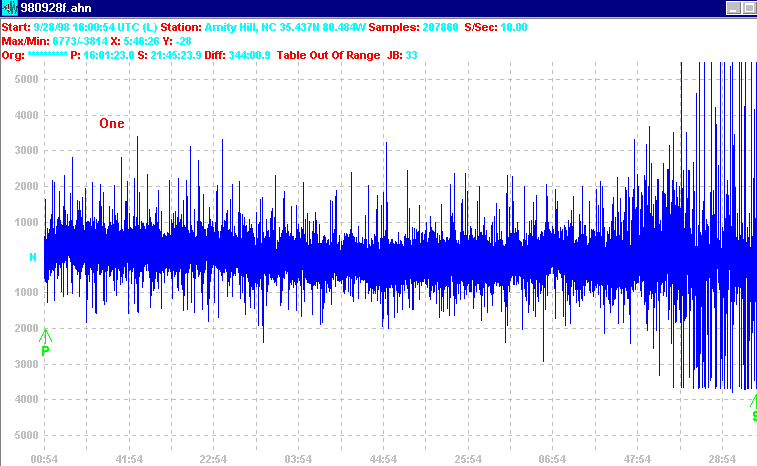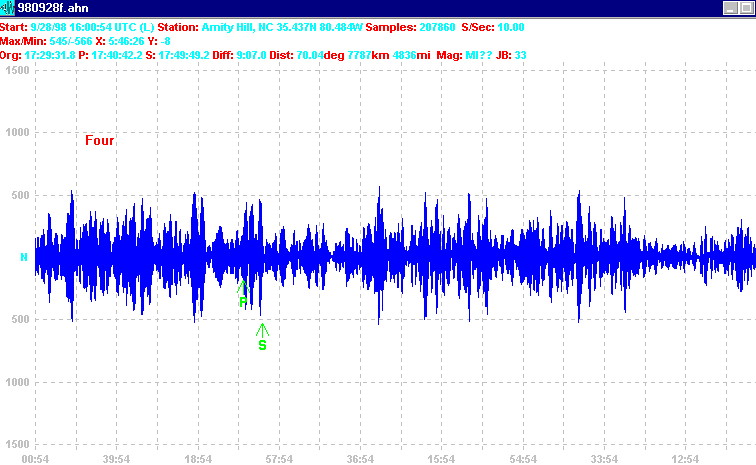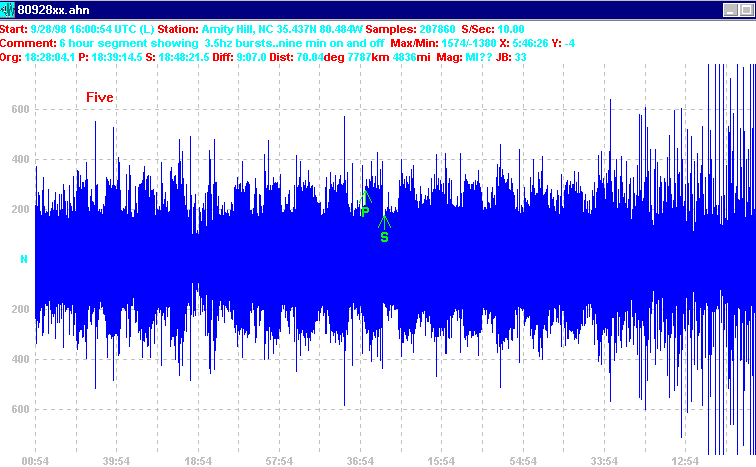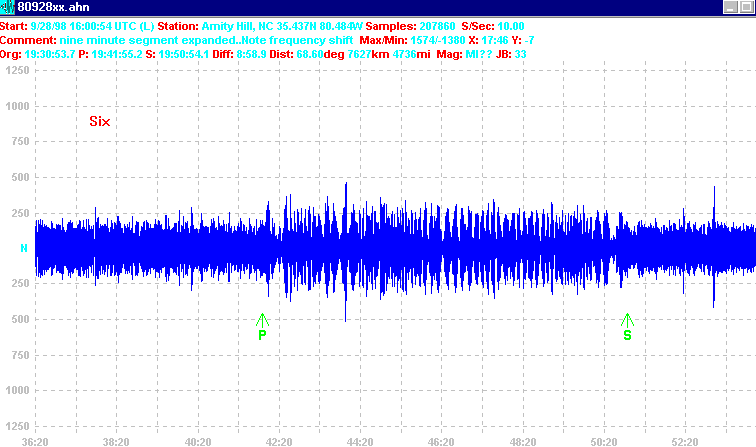
Hello Kent,
Thanks for the note alerting me to search the past several days of data. I have been analyzing what I have found, all day, and I believe I am just scratching the surface. More on the scalar aspect later.
The first pic labeled "one" is a raw data capture of a segment six hours in length and is filtered in order to not pass a signal above 5hz.

The next pic labeled "2" is the frequency spectrum of pic #1. Note there are three predominate peaks. At the left of the shot are signals from the solar flux. The next peak to the right, pictures signals peaking from .02 to .04 hz and you will see a small peak with the signal peaking at 3 to 4 cycles per second.

The pic labeled "3" is low pass filtered at .002 hz and details the real time signal which corresponds closely to the flux peaks shown by the satellite data.

The photo labeled "4" are the frequencies shown in real time after they were band pass filtered at .02 to 04hz. Note the unusual pattern.

The pic labeled "5" is filtered to pass only those frequencies between 3 and 4hz. Notice the evenly spaced bursts consisting of nine minutes on and nine minutes off. It appears there were 16 bursts during this 6 hour period.

Pic "6" is an expanded view of one of the nine minute bursts. You can see that this period consists of several frequencies ranging from 3.4hz to 4hz.

The final pic "7" is a spectrum analysis of pic "6" which tells us that indeed the frequency was swept from 3.4 to 4hz.


This six hour period of data contained evenly spaced bursts of signals which contained several types of modulation. Frequency modulation combined with pulse width techniques were transmitted in a variably spaced envelope.
ELFRAD GROUP